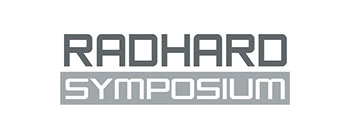Abstract

ADLER-1 – First results from the APID-1 Space Debris instrument
Gernot Groemer1, Willibald Stumptner1, Peter Schüller1, Christian Federspiel2, Wolfgang Ebner2, Stefan Amberger3
1 Austrian Space Forum
2 iSEE/Impact Space Expedition & Exploration Global Corp.
3 Tilebox
Abstract
Modeling the environment of Space Debris and Meteoroids (SD/M) in Low Earth Orbit presents significant challenges, particularly for sub-centimeter-sized particles that fall below the detection thresholds of ground-based observations. The MASTER model by ESA [1] serves as a crucial reference for risk assessments and mission planning. However, with the substantial increase in satellite operations over the past decade [2,3] , the absence of recent in-situ data for calibrating these models becomes apparent. The ADLER-1 mission, conducted at an altitude of ca. 500 km for 1,5 years, served as an in-orbit demonstrator for deploying a piezoelectric sensor array and a continuous-wave miniature radar to acquire pilot data. The APID-1 instrument on ADLER-1 recorded 117 impact events over approximately 400 days, allowing for a comparison with MASTER simulations [4].
Based upon a SPIRE LEMUR-class 3U CubeSat, ADLER-1 (UNOOSA designation LEMUR-2-KRYWE) platform with a mass of 6 kg in a 44,9° inclination orbit, deorbiting in June 2023. During the orbital phase, 80% of that period were used for scientific measurements. The payload consisted of a continuous-wave radar system as well as an electromechanical detector array APID-1.
A versatile data pipeline architecture was implemented for efficient data processing, enabling the deployment of new signal processing source codes. This architecture includes automatic execution of build, unit, and integration tests upon Pull Request (PR) submission and merging. The on-board computing source code facilitated over-the-air updates during the mission and over-the-air updates and configuration changes during the mission, and the adaptability of the ground processing system allowed for a comprehensive reassessment of the entire level 0 data set whenever a new analysis algorithm was iterated.
References
[1] V. Braun, A. Horstmann, S. Lemmens, C. Wiedemann, L. Bottcher, RECENT DEVELOPMENTS IN SPACE DEBRIS ENVIRONMENT MODELLING, VERIFICATION AND VALIDATION WITH MASTER, (2021).
[2] A. Horstmann, S. Hesselbach, C. Wiedemann, S. Flegel, M. Oswald, Final Report–Enhancement of S/C Fragmentation and Environment Evolution Models, Institute of Space Systems (IRAS) DD-0045, 26th Aug. (2020).
[3] A. Horstmann, A. Manis, V. Braun, M. Matney, A. Vavrin, D. Gates, J. Seago, P. Anz-meador, C. Wiedemann, S. Lemmens, Flux Comparison of Master-8 And Ordem 3.1 Modelled Space Debris Population, in: virtual, 2021. https://ntrs.nasa.gov/citations/20210011563 (accessed December 14, 2023).
[4] ESA’s fragmentation database: In-situ Space Debris and Impact Detection., in: virtual, 2022. https://fragmentation.esoc.esa.int/home/blog/in-situ-detectors (accessed December 8, 2023).
![[Translate to English:] [Translate to English:]](/fileadmin/uploads/intranet/events/radhard/2023/header-radhard2023.jpg)
